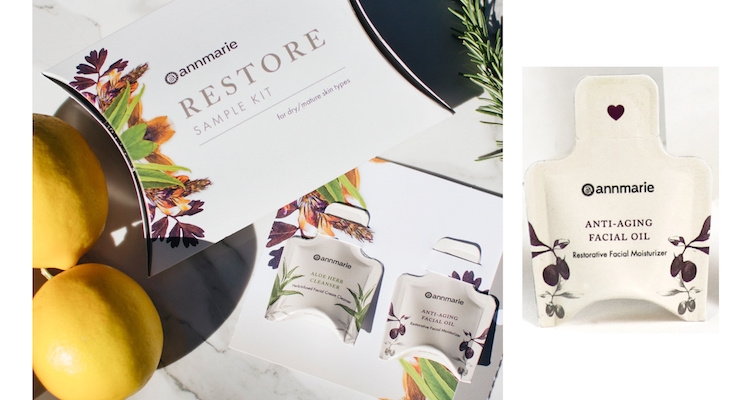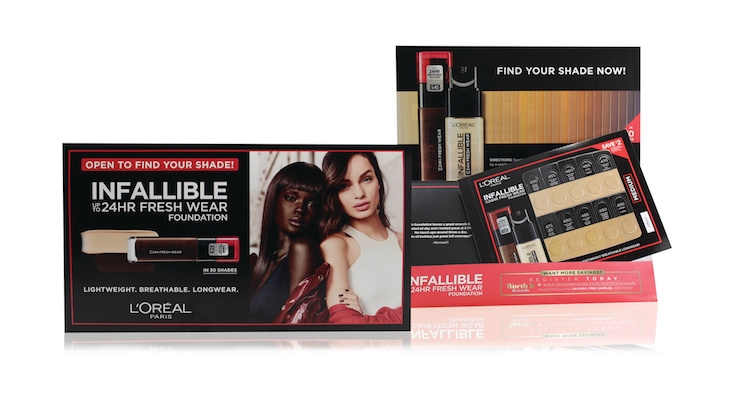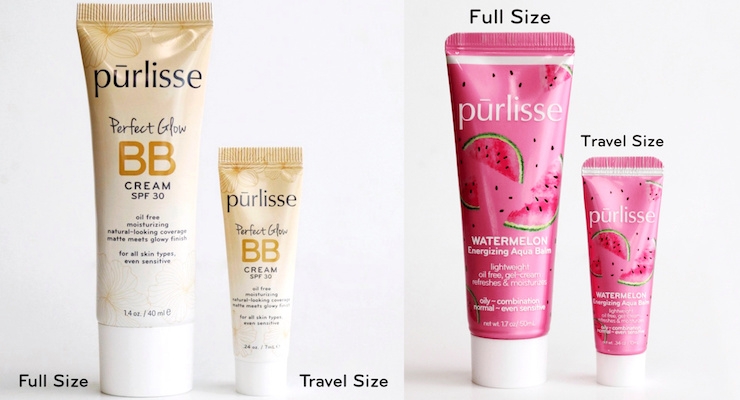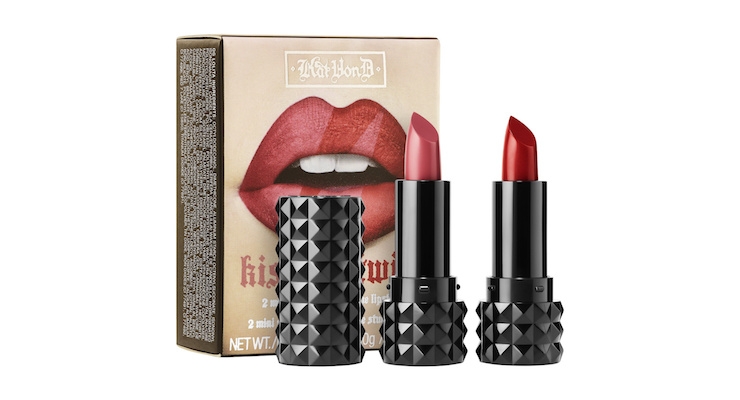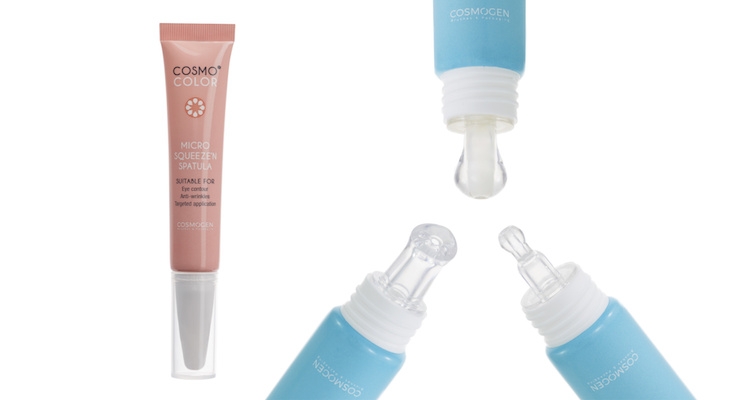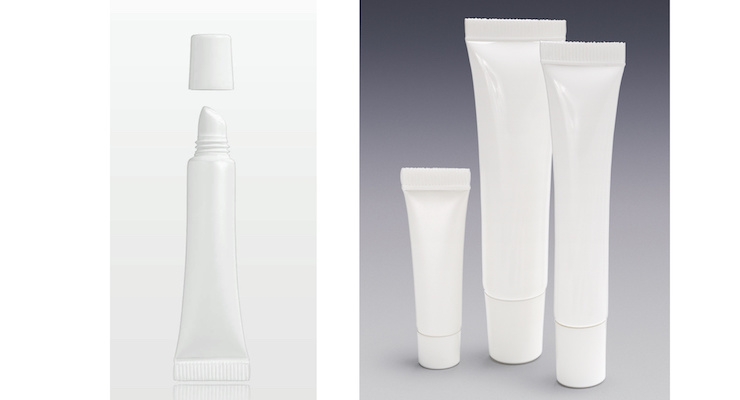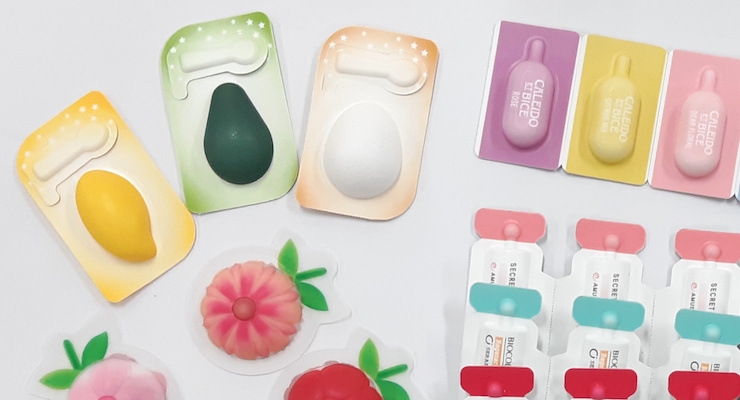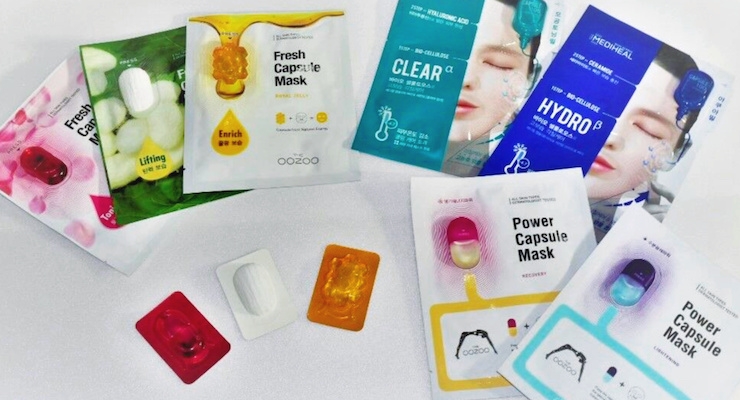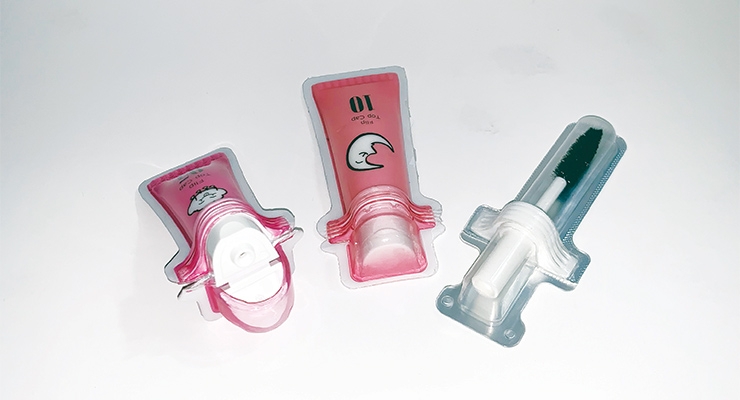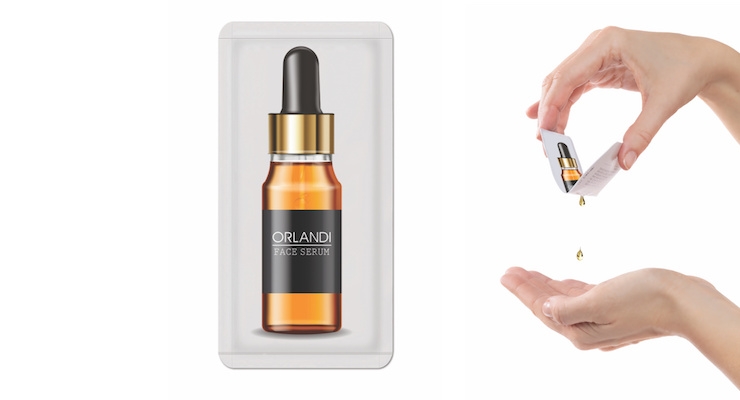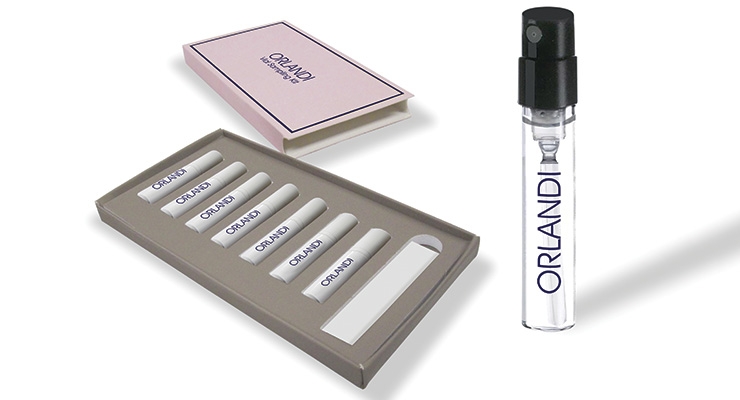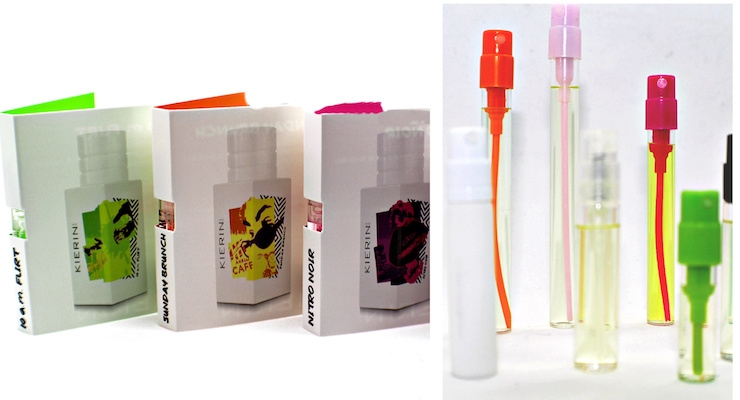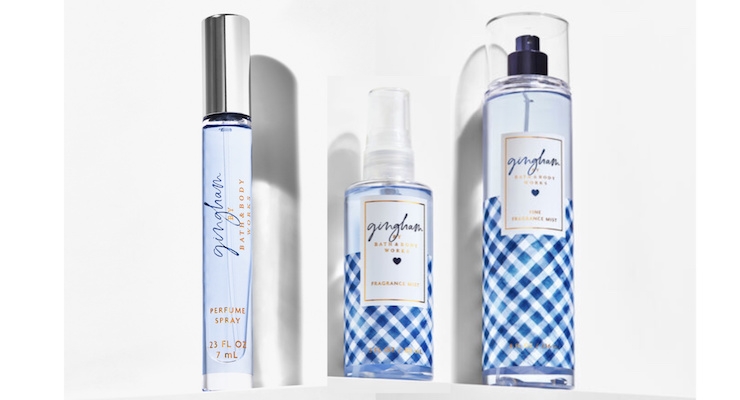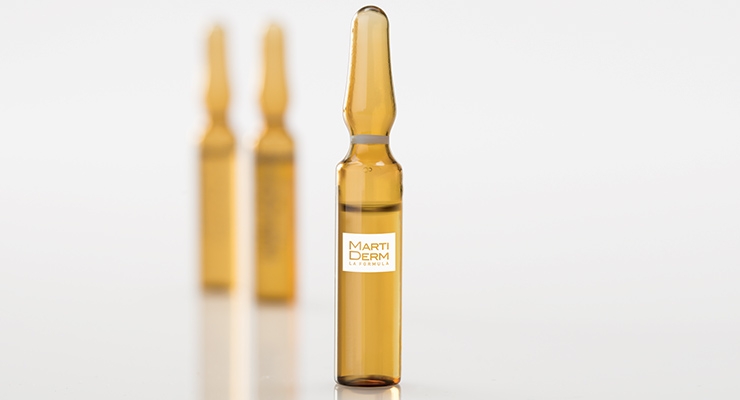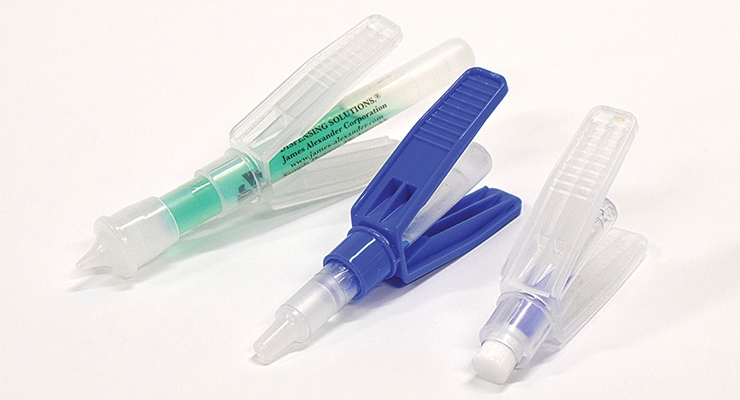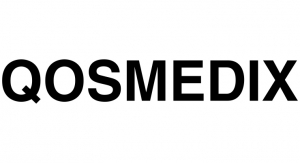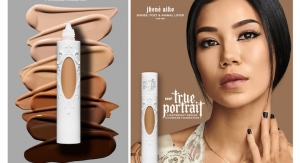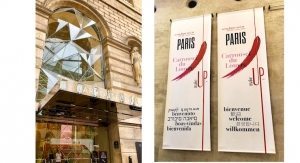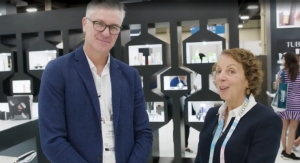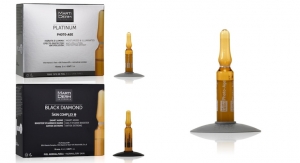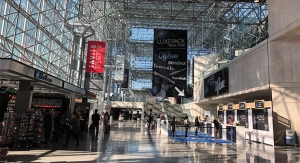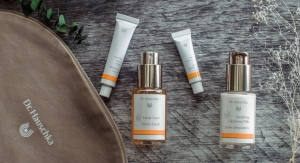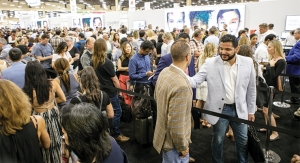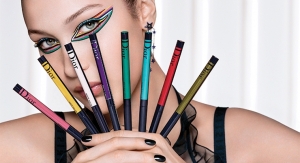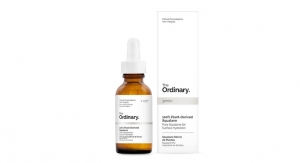Marie Redding, Senior Editor08.30.19
Sample packages have always had a place in beauty marketing. Demand was fueled by the popularity of subscription boxes at first, as well as the surge in online shopping.
Now, most beauty and fragrance samples are either requested, sold, or sent to beauty fans in subscription boxes.
“Sampling has become an expected norm of the beauty business,” says Jaimee Given, marketing manager, Beauty, North America, Aptar. In the age of ecommerce, samples take the place of an in-store “brand experience” at home.
Given explains, “Consumers want an authentic experience with the product prior to making the investment…to come to their own conclusions, without relying on trusting influencers.”
Ashvin Vaghani, CEO, Cosmetics & Perfume Filling & Packaging (CPFP), says, “With e-commerce playing a big role, sampling has changed. I feel that free sampling has [been reduced] quite a bit in the U.S.—but consumers are more willing to purchase samples, and more are being sold, especially over the past year.”
Sven Dobler, president/CEO, Orlandi, also sees an increase in samples that are sold, explaining, “As brands are attempting to engage consumers online, outside of traditional brick and mortar settings, we are seeing them develop strategies for customer paid sampling.”
Consumers are not only requesting samples and are willing to purchase them—but diehard beauty fans can’t seem to get enough of them, as the NY Times article Your Hoarding of Sephora Samples Is Out Of Control points out.
Sari Sternschein, vice president of marketing, Qosmedix, says the demand for samples is steadily rising, and it is very much fueled by ecommerce. “Samples are so accessible to more consumers now,” she says, adding, “Consumer behavior has also changed. Consumers are no longer loyal to one brand. Millennials, especially, love to try a product and move on to the next.” Sampling and mini sizes provide a way for new types of beauty consumers to continually try new products.
Along with the rise in demand, samples and minis are being offered in new formats and styles. They are being designed and decorated with the user’s experience in mind—and with greater brand recognition.
Given says beauty brands have established a new “mini” category, echoing the consumer experiences found at beauty retailers.
Dobler says more requests are coming in from brands for samplers that offer more flexibility in design. “We see more inquiries for samples that offer variety, such as accommodating several foundation makeup shades or multiple lipstick colors. These ‘variety samples’ are more engaging, but they also need to be cost-effective, compact, durable and easy to distribute.”
Arcade Beauty also fields requests for multi-shade color sampling—and offers brands its BeautiSeal and Thermoform technologies. “BeautiSeal can accommodate up to 12 different formulas on one label, which is useful for showcasing an array of shades. The formulas are enclosed in a heat-sealed, pressure-sensitive package that is permanently attached to accompanying marketing materials,” explains Larry Berman, senior vice president of sales, Arcade Beauty.
Many suppliers are accommodating brands by offering more styles and sizes, from single-use samplers to deluxe minis—plus, micro-minis and travel sizes, for even more variety. Different formats accommodate products with different viscosities. There are spray vials for fragrances, blisters on cards for liquids, bottles and tubes for creams, gels and lotions—plus tubes with dropper tips for serums or applicator wands for makeup. Many brands are using minis that look nearly identical to a product’s full-size version, especially for makeup including lipstick, lip gloss, mascara and face powders.
More Minis in All Sizes—and Sets
Beauty brands are capitalizing on consumers’ addiction to sample and travel sizes by continually offering new products as minis, limited-edition mini collections, and mini sets. When Method launched new fragrances in its Body Wash lineup, including Pure Peace, Deep Detox, and Energy Boost, the brand also created a variety pack set. It included three mini bottles in 3.4-oz sizes, so consumers could try all three, for a limited time. The mini bottles, with flip-top caps, looked identical to the full-size bottles.
Purlisse Beauty’s skincare line includes tubes in two sizes: minis for travel, and smaller sizes for samples. The brand uses tubes for the majority of skincare products, and the minis are decorated to match the full-sizes.
Jennifer Yen, founder, Purlisse Beauty, says, “We offer the majority of our products as minis, designed for travel. The TSA-approved sizes contain enough product to use for up to one month. They are designed to mimic the look of the full-size product because it makes the brand recognizable,” she says, adding, “and who doesn’t love a beautiful design on an adorable mini?”
Purlisse’s smaller sample tubes are distributed to beauty box subscribers; the brand partners with Ipsy, Birchbox and Boxycharm. “Many of our customers who purchase full-sizes first tried our products in a subscription box,” says Yen. The brand’s most recent launch is a Matcha Green Tea Antioxidant Sheet Mask, in individual packets. One is offered as a sample, and a set of six is packaged in a carton.
Kat Von D recently launched a collection of its bestsellers as minis, calling the travel-friendly sized products “Kittens.” One of the brand’s mini sets is its Kitten Mini Kiss Me Twice Studded Kiss Crème Lipstick Set, sold at Sephora (shown). It includes two colors, and the lipstick cap features a “studded” design, just like the full-size version.
Kat Von D’s minis and mini sets make trying new products and colors more affordable for the brand’s fans, while the low price point may also attract first-time buyers. The collection also features a TSA-friendly makeup bag, designed with a clear front panel.
Mini & Micro-Sized Tubes for Skincare
Since skincare products vary greatly, from thick creams to oily serums and gels, pairing a formulation with the right type of sample or mini package is key to ensuring a positive user experience.
Cosmogen’s tubes, available in mini and micro sizes (many of which come in 5-20ml sizes), are ideal for a wide range of makeup or skincare products. Cosmogen’s Micro Squeeze ’N range is one example. The tubes can accommodate three different types of 2-in-1 applicator tips: Micro Squeeze ’N Glow, designed to apply products onto the lips; Squeeze ’N Style for eyebrows; and Squeeze ’N Spatula for the face and eye area.
The tubes also feature a patented on/off closure rotary system that protects the formula and allows users to dispense the correct dose without waste, before using the tips to “smooth, sculpt or stretch the formula onto the targeted area,” the supplier states.
Qosmedix offers tubes in sizes that range from 1-15ml. Sternschein says, “They are perfect for sampling lip gloss and lip balm. They come open-ended and ready to fill. The neutral white color makes it easy to label or to be decorated while in production.”
More Innovative Designs for Ease of Use
“Fresh mix” formulas are often challenging to sample, since two products need to be kept separate until use. Several suppliers, however, have come up with solutions.
Arcade Beauty’s Fusion Pack has two separate chambers to keep ingredients from mixing prior to application. “This design allows brands to sample skincare products that isolate concentrated actives,” explains Arcade’s Berman. “It offers a way to freshly combine ingredients and dispense a precise dose at time of use,” he adds.
Arcade Beauty’s Fusion Pack is appropriate for a wide range of formulas, such as liquids and creams. “An applicator pad can also be included for a deluxe application,” says Berman.
Blisspack also offers an innovative way to sample “fresh-mix” formulas—or, a way to include a “booster shot” with a product, such as a sheet mask. “Sheet masks are typically infused with a product during the packaging process of a large sachet. When a mask is packaged in a sachet along with our integrated action blister, the user squeezes to break the blister’s seal and barrier, releasing the active ingredient onto the sheet mask,” explains Jonathan Needham, consultant, Blisspack.
Blisters, which are Blisspack’s specialty, provide numerous design possibilities for innovative sample packaging—and offer a number of benefits. Since blisters require significantly less material than a mini tube, for example, some types may be considered eco-friendly, depending on the design. “Blisters also offer flexibility in design and visual appeal. We can do an avocado-shaped blister for an avocado face cream, for example,” says Needham.
Blisspack can also produce its blisters using innovative high-barrier films, which protect a product from humidity, moisture, light, and air. “We can guarantee a product is protected for three years when using these types of film,” says Needham.
The supplier also offers another innovative design—combining injection molded parts with blister packaging, such as a flip-top closure. “We also can change the closure to a pump spray for a fragrance. Or we can also do a multi-use eyeliner, lip gloss or mascara,” says Needham.
Orlandi offers an innovative design—V-Shapes. It looks like a card, and is a unit-dose system designed to dispense creams, lotion, emollients, shampoo, and spot treatments. The package can be opened conveniently using one hand.
V-Shapes provide easy application and controlled dispensing of the product. It is ideal for any sampling application or as a stand-alone retail product sold in packs, and available in a variety of sizes with fill weights up to 25ml.
Sampling Solutions for Scents
Fragrance brands offer samples and minis and, just like in other product categories, sets and kits are trending. Orlandi offers a packaging solution for fragrance sample sets (shown), which includes a retail-ready box with its PulsePumps spray vials.
“Fragrance brands are developing luxury Vial-Kits, featuring multiple fragrances, packaged like a valuable retail product,” says Orlandi’s Dobler. “These programs allow consumers to sample a range of branded fragrances, while receiving a luxurious product-like experience that’s worth paying for,” he says.
Selling a set of sample-size spray vials in a luxurious box gives consumers an enjoyable way to compare different scents at home, and it is an approach many brands are taking. “I see an increase in the number of requests for Discovery Sets, and we are producing them in larger quantities for different brands,” says CPFP’s Vaghani. “Brands are including from four to ten spray vials in a set,” he adds.
Fragrance sample sets are usually priced low, and the cost is refunded if the consumer purchases a full-size fragrance. “This strategy also allows marketers to acquire customer information for remarketing,” adds Dobler.
Kierin NYC sells a Discovery Set—but the brand also uses vials on cards (shown). CPFP supplies the vials on cards, turnkey, with pumps and actuators in a variety of color options, to increase brand recognition. The decoration on the cards matches the decoration and colors on Kierin’s full-size fragrance bottles. CPFP supplies its vial sprays in sizes ranging from 1-4ml. Roller balls and mini sprays are also available.
When Bath & Body Works launched its Gingham fragrance earlier this year, a mini spray was part of the collection, priced at an affordable $12.50, which is just less than one-third of the price of the 2.5 oz Eau de Parfum. The mini spray package, however, is filled with a different type of “juice,” making it a stand-alone product, not just a trial size. It is also ideal for travel. The brand states, “With a higher concentration of fragrance oils, our Mini Perfume Spray delivers a more intense, long-lasting scent…”
Unlike roller balls, the 7ml spray pump delivers a user experience that is more similar to using the full-size bottle. The Mini Perfume Spray is tall and slender, with a gold actuator that is more comfortable to hold.
‘Green’ Samplers and Compatibility Issues
Being more “green” is less of an option, and more of a requirement for many brands—and eco-conscious goals apply to sampling as well. “Brand marketers are always looking for more sustainable packaging options across every category, and now this has moved into sampling,” says Mark K. O’Malley, president/CEO, Paket Corporation.
Paket offers packets, sachets, vials, and mini tubes, as well as die-cut shapes for packets, along with many eco-friendly options. “Our sustainable sample packaging options include film structures made from post-consumer material,” O’Malley says.
Paket also offers numerous decorating options. “Making sure a samplers’ color and shape matches the look of the full-size product is so important, even when a brand’s sustainability goals come first. The right look helps maintain a close connection between the retail item and the sampler,” O’Malley says.
Orlandi’s Dobler also mentions sustainability, saying, “We are seeing a more concerted effort by marketers and brands to source sample packaging that is more environmentally friendly, whether from a recycled content, recyclablity, sustainability or compostability standpoint.”
At the same time, there is a rise in the development of more natural formulations, with less preservatives, which can pose challenges. “Bulk formulas, at times, have less shelf life than in the past because more brands are using natural-based formulas that have less preservatives to better meet international ingredient standards and expectations of consumers,” explains Dobler. He continues, “This trend is often at odds with sustainability goals, as some of these formulas need packaging that is more impervious to moisture or gases—and they tend to break down slower, or are less recyclable.”
Qosmedix’s Sternschein also sees a rise in requests for eco-friendly samples—and mentions other types of compatibility issues with a product’s formulation and “green” materials. “Oil-based products can be especially challenging to sample—it is critical for us to supply eco-friendly packaging that can store the product properly and not leak.”
Xela Pack has been producing one of the most sustainable sample packages for years—the Xela Pack, often made with PCR. Anthony Gentile, the company’s director of art and marketing, also mentions how a product’s formulation can cause issues, but the company found a solution. Gentile explains, “We have been working hard for decades to be able to handle the widest array of products possible in our eco-conscious Xela Packs. With the recent increase in coconut-oil-based products on the market, as well as products such as balms that are thicker when cool or cold, we had to develop new heating systems that allow us to fill these products into the Xela Pack without any additional processing required.”
Xela Pack produces a sample kit for Annmarie Gianni skincare. It includes product samples inside a secondary package with a coupon to purchase a full-size item. “We produced a pillow-style secondary package that contains two 5ml samples,” says Gentile. The brand’s website currently lists nearly 900 reviews for the kits. “The reviews average 4.5 stars out of 5—it appears they are very well-liked,” says Gentile.
Xela Pack is nearing completion on the building of an updated Xela Pack Form Fill Seal machine. “We are offering these machines for sale, to companies that want to produce Xela Packs in their own facility,” says Gentile. Xela Pack co-owns Gentile Packaging Machinery, and Gentile is the company’s vice president. It provides all of Xela Pack’s machinery and packaging equipment. “Gentile Packaging Machinery can design and build custom systems or upgrades, which allow us to move into markets that we would otherwise not have access to,” he explains.
What Lies Ahead
How should suppliers—and brands—prepare to meet the future sampling needs of beauty consumers? Orlandi’s Dobler says, “Sampling companies must offer a large variety of sample solutions, including larger, multi-tier-use dimensional samples.”
Dobler says the growth of digital marketing, as well as newly emerging types of direct-to-consumer sampling solutions, will continue to fuel the demand for sample packaging—and may inspire the development of new types of sampling programs. He explains, “While existing product marketing channels remain important, we are seeing additional growth through the support of existing retail or brand loyalty and CRM programs.” He also says the industry may expect to see more consumer-generated requests from brand outreach on social media, blogs and websites.
Arcade’s Berman says, “Brands will continue to reimagine product discovery, and continually experiment with data-driven sampling programs, as evidenced by brands’ DTC social sampling efforts.” He continues, “Sampling efforts are becoming more and more targeted, and it has thus become increasingly important to provide a discovery experience that is not only relevant, but in many cases tailored to the consumer’s preferences.”
Regarding user-friendly designs, CPFP’s Vaghani says we will see the development of more new ways to sample both fragrance and makeup. “We are working on new types of samplers, and once all tests are complete, we can share the news.”
We can’t wait to see what beauty brands and suppliers come up with next—stay tuned.
See the photos in the slideshow above.
James Alexander debuts a new ampoule designed for easier use, while skincare brand MartiDerm says it’s the first to use an ampoule for a cosmetic application.
Single-use packaging may be more often associated with sampling, but more beauty brands are packaging products as unit-dose regimens, and using ampoules for certain types of skincare products.
Ampoules provide protection for sensitive and natural ingredients, since they are not opened until use. James Alexander is a leading manufacturer, contract packager, and custom filler of unit-dose dispensing systems for skincare and topical applications. The company offers plastic ampoules that provide ease of use through a single-handed activation, as well as glass ampoules in one- or two-part systems.
The supplier is introducing a special feature for its crushable glass ampoules—an enhanced design with patent-pending “wings.” This feature allows users to activate James Alexander’s single-use glass ampoules more easily. The new feature is available in three sizes and any Pantone color.
Ampoules for Skincare
Barcelona-based skincare brand MartiDerm uses ampoules for many of its skincare products—and the brand says it was the first, ever, in 1989, to use an ampoule for a cosmetic product.
MartiDerm is entering the U.S. market this year with its Smart Aging dermatological products. The brand’s Photo Age Ampoule is an intensive treatment that moisturizes and firms the skin, while helping to prevent photo-aging caused by sun damage.
According to the company, “This formula has proven efficacy in repairing and regenerating the skin. The ampoule is the only format which protects pure Vitamin C from light and air, guaranteeing its maximum efficacy.”
Suppliers agree—samples and minis are in demand. Qosmedix recently took an innovative approach to fulfilling requests, with a new website called Itty Bitty Beauty, which features a 3D configurator. “Brands can visualize the packaging, upload artwork, get price estimates, share with colleagues, and request a quote,” says Sari Sternschein, vice president of marketing, Qosmedix.
Identipak’s team says it is fulfilling more requests for beauty box samples, travel retail minis, hotel amenities, and e-tailer samplers—and recently renovated to meet demands. “We’ve expanded our facility space and added new, state-of-the-art machines. In addition to being FDA Registered and Organic Certified, we’ve also expanded our certifications and updated our processes to be more efficient,” says Margery Woodin, the company’s vice president of marketing and sales.
To keep up with the increased demand for its liquid stick packs, Identipak added two new multi-lane stick pack machines, plus additional vial filling lines. Woodin adds, “We also added two new high-speed diecut sachet machines to our existing lines, a new towelette duplex machine, a 6-up bottle filler and two additional tube fillers.”
A notable innovation in distribution strategies this year was Arcade Beauty’s recent partnership with Vengo Labs, a retail tech company that debuted the first-to-market “connected beauty sampling kiosks.”
The sleek, digital vending machines can get beauty samples into the hands of consumers, instantly. Retailers can use the digital vending machines to engage consumers, create a custom experience, and collect valuable user data. The machines can be placed in gyms, hotels, airports and more.
Vengo digital kiosks are already across the country, in a variety of venues. Arcade Beauty hopes to expand Vengo’s reach, providing a new outlet for beauty sampling.
See the photos in the slideshow above.

